-
Oil tankers and refineries on high alert based on latest al Qaeda intelligence
Refineries and ship operators are on a state of heightened alert after documents recovered from the raid on Osama bin Laden’s compound revealed that al Qaeda had considered bombing oil tankers; DHS officials issued the warning to law enforcement officials nationwide based on evidence that al Qaeda operatives had discussed holding drills to practice hijacking and bombing oil tankers to create “an extreme economic crisis” in the United States; port officials and refineries in Houston, Texas are particularly wary, as it is the largest oil producing region in the United States with tankers constantly moving in and out
-
-
Hydropower gaining traction around the world
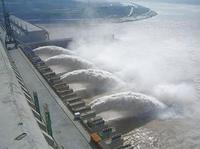
As more nations turn to renewable energy sources, wind and solar have often grabbed all the attention, but hydropower has been steadily making quiet gains. While hydroelectricity is becoming more prevalent, its future is riddled with uncertainty and difficult questions; in 2008, hydroelectricity generated more than 250 billion kilowatthours of electricity, roughly 67 percent of all renewable energy produced that year; new dam projects are also generating a lot of criticism from environmentalists and local residents who worry about the people who will be displaced as well as the dams’ environmental impacts; ironically hydroelectric dams will be affected by climate change, the very thing it is designed to combat
-
-
Risk of wetland habitat loss in southern United States
Between 1992 and 1997, more than 500,000 acres of wetlands were lost in the United States; 75 percent of those losses were attributed to development or agriculture; the greatest loss during this period occurred in the southern United States, with development as the main reason for wetland habitat loss; wetlands are important not only as a habitat for wild life, but as a line of defense against catastrophic floods and intense storms
-
-
Using river sediment to repair the coast

The water of the Mississippi River swells beyond levees and flood-control barriers, flooding large areas, destroying costly infrastructure assets, and inflicting economic harms; not all is bad, though: large floods like the current one carry huge quantities of sediment that eventually deposit on the riverbed, making the river shallower, or are carried out to the Gulf of Mexico; the vast amount of water going south will replenish Louisiana’s coastal wetlands, and the sediment carried by the water will restore long stretches of eroding coastline and rebuild barrier islands in the Gulf
-
-
Following Fukushima: how much radioactivity in the Oceans?
A result of the loss of electricity at the Fukushima nuclear plant in Japan on 11 March, overheating led to significant releases of iodine, cesium, and other radioisotopes to the environment; Japanese officials recently raised the severity of the nuclear power plant incident to level 7, the highest level on the international scale and comparable only to the Chernobyl incident twenty-five years ago; the National Science Foundation awards rapid-response grants to establish ocean radionuclide levels from Fukushima
-
-
EU nearing agreement on nuclear stress tests
The European Union could begin stress-testing its nuclear reactors as early as June 1; officials are nearing an agreement on the parameters for safety tests, but are still hammering out the last “two or three” issues; following the nuclear disaster at the Fukushima Daiichi nuclear plant in Japan, European energy officials as well as industry groups have been pushing the government to conduct stress tests on its nuclear facilities to determine how they will fare in various disaster scenarios; EU Energy Commissioner Guenther Oettinger has sought to include threats from terrorist attacks as well as cyber attacks, which has stalled stressed test negotiations
-
-
Barge traffic resumes on Mississippi River

On a typical day, some 600 barges move back and forth along the Mississippi, with a single vessel carrying as much cargo as 70 tractor-trailers or 17 rail cars; the barges haul coal, timber, iron, steel, and more than half of America’s grain exports; interruptions of barge traffic could thus cost the U.S. economy hundreds of millions of dollars for each day the barges are idled; early Tuesday the Coast Guard halted barge and cargo haulers traffic along a 15-mile stretch of the river near Natchez, Mississippi; the Coast Guard and the Army Corps of Engineers were worried that the heavy wake churned by barges and cargo haulers increase the pressure on levees which are already straining to hold back the rising river; on Tuesday night the Coast Guard re-opened the blocked section, and barges were allowed to go through but only one at a time, and at a very low speed
-
-
Japanese government anticipated tsunami's effects at nuclear plants
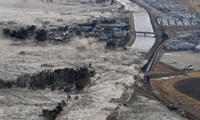
Growing evidence suggests that the Japanese government and Tokyo Electric Power (TEPCO) ignored clear warnings that infrastructure at the Fukushima Daiichi power plant would be damaged in the event of a massive earthquake; Japan’s Mainichi Daily recently obtained government documents that indicate a government research group clearly outlined the effects of tsunamis on nuclear plants; as TEPCO battles to contain the radiation spewing from the Fukushima Daiichi reactors, the power company and the government have insisted that the 11 March earthquake and tsunami that knocked out cooling systems at the Fukushima Daiichi plant was well beyond their expectations
-
-
Fukushima lessons for U.K.'s nuclear industry
An interim assessment of the implications of the nuclear crisis in Japan concludes there is no need to curtail the operations of nuclear plants in the United Kingdom but lessons should be learnt; the report identifies twenty-five recommended areas for review — by either industry, the government, or regulators — to determine whether sensible and appropriate measures can further improve safety in the U.K. nuclear industry; these include reviews of the layout of U.K. power plants, emergency response arrangements, dealing with prolonged loss of power supplies, and the risks associated with flooding
-
-
Saudi Arabia seeks $330 million worth of night vision gear
Saudi Arabia is looking to buy $330 million worth of night vision and thermal vision equipment from the United States; the U.S. government agency facilitating the deal says the proposed sale would bolster Saudi Arabia’s capability to meet current and future threats from potential adversaries during operations conducted at night and during low-visibility conditions
-
-
Cost-effective way to produce solar thermal hydrogen fuel developed
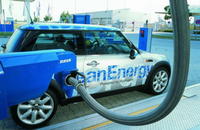
The U.S. Department of Energy is investigating novel approaches for solar thermochemical water splitting — that is, splitting water into its gaseous components, hydrogen and oxygen — to produce hydrogen, with the eventual goal of commercializing production; DOE’s cost targets set hydrogen production in 2015 at $6 per kilogram and hydrogen delivery in 2025 at $2 to $3 per kilogram.; and innovative technology, using thin-film metal ferrite process, developed by University of Colorado Boulder researchers is projected to meet both benchmarks
-
-
University of Oklahoma student offers solutions Ethiopia's water problems

In Ethiopia’s Rift Valley, the high levels of fluoride in the drinking water result in dental and skeletal disease; left untreated, fluorosis causes darkening of the teeth and bone deformities; a University of Oklahoma student has been investigating inexpensive, sustainable and locally available solutions, such as adsorption — a useful technology for fluoride removal from drinking water because it does not require energy input outside of gravity and, depending on the material used, can be very effective at removing fluoride to meet the World Health Organization standard
-
-
More setbacks at Japan's beleaguered nuclear plant
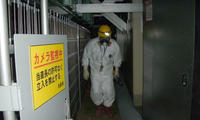
Japan’s latest efforts to contain reactor no. 1 at the Fukushima Daiichi plant hit a major obstacle last Saturday when a worker discovered a large pool of radioactive water in the reactor building; the pool is an estimated 18 feet deep and holds as much as 3,000 tons of water, more volume than an Olympic sized swimming pool; additional measures were being readied to treat and store radioactive water at Fukushima; officials have begun preparing a nearly 450 foot long “Mega-Float” that was previously used as an artificial island for fishing south of Tokyo to store the contaminated water
-
-
More American civil engineers deployed to Japan to study damage
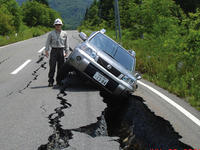
Last week the American Society of Civil Engineers (ASCE) deployed two more disaster assessment teams to Japan to study the damage wrought by the 11 March earthquake and tsunami; the two teams, the third and fourth deployed by ASCE, will tour the damaged areas which include the approximately 292 square miles inundated by the tsunami; one team will focus on examining the effects that the tsunami and earthquake had on port structures; the other team will focus their efforts on investigating the impact of the earthquake and tsunami on coastal structures like tsunami walls, breakwaters, and seawalls
-
-
U.K. lab helps company improve its infrastructure monitoring sensors
London-based Senceive produces sensors used in long-term infrastructure monitoring; the company’s meshed systems of wireless sensors are used to assess the condition of railway structures, track, bridges, culturally significant buildings, and even historical artifacts; the company needed the help of the U.K. National Physical Laboratory to improve the tilt sensing system it manufactures, and verify its accuracy, precision, and limits
-
More headlines
The long view
Coastal Populations Set to Age Sharply in the Face of Climate Migration
As climate change fuels sea level rise, younger people will migrate inland, leaving aging coastal populations — and a host of consequences — in their wake. While destination cities will work to sustainably accommodate swelling populations, aging coastal communities will confront stark new challenges.
Unlocking Energy-Efficient Solution to Global Water Crisis
Researchers achieved a major breakthrough in Redox Flow Desalination (RFD), an emerging electrochemical technique that can turn seawater into potable drinking water and also store affordable renewable energy. Researchers achieved a major breakthrough in Redox Flow Desalination (RFD), an emerging electrochemical technique that can turn seawater into potable drinking water and also store affordable renewable energy.
